Room for Debate: Did Latin Have to Go Remote?
Don’t Settle—Remote Learning is NOT the Only Option – Marianne Mihas
On August 4, Head of School Randall Dunn sent an email to the entire Upper School notifying students, parents, teachers, and faculty members that high school students would not be returning to campus this fall. The announcement came after the school had proposed a plan which allowed all students, kindergarten through 12th grade, to be in school. This turn of events sparked a large array of reactions, some guided by fear, others guided by anger. And while yes, not every student or teacher should be back in school for valid reasons—being a high-risk individual, living with elderly grandparents, etc.—as a rising senior, I believe that we can, and should, be at least somewhat back in school this fall.
“If it were up to me, I would design a plan where teachers can opt in or out of teaching in person,” said Upper School math teacher Zachary McArthur. “I think there’s a very local group of teachers who are worried about teaching in the school, and I think they should have the option to teach remotely. And I think there are a number of teachers, given the option, who would love to teach in the school in person.”
From a statistical standpoint, students are at very low risk of being seriously affected by COVID-19. There is increasing evidence that masking-up and keeping a 6-foot distance from others drastically reduces the risk of contracting COVID-19. According to UC Davis Dean A. Blumberg, Professor of Pediatric Infectious Disease, less than 1% of COVID-19 related deaths are individuals under 35 years of age, an age range that includes all students and a good number of the Latin faculty. Even with people between the ages of 20 and 49, the infection fatality rate is 0.0092%, meaning fewer than one in 10,000 people who contract the virus will die from it. Furthermore, only 10-30% of infections are transmitted by asymptomatic people, so the great majority of risk of spread can be mitigated by ensuring those who are ill stay home. Putting these numbers in perspective demonstrates that COVID-19 poses relatively little threat to the student population. A small number of deaths in individuals of ages 15 to 25 are due to COVID-19, while 33% of teen deaths are from car accidents. If we aren’t allowing our students to go to school because of the virus, shouldn’t we also forbid student driving to ‘mitigate risk’?
While there are many statistical reasons suggesting that students are relatively safe to go back to school, the argument that any risk is too much risk remains unconvincing. Many Latin teachers and faculty—but still a minority, 78 of the 180 Latin teachers—signed a letter addressed to the administration expressing their concerns about returning to campus. One of the letter’s many arguments states that we should not return to school because “Latin’s priority for the upcoming school year must be healing the trauma experienced by our BIPOC community members.” However, as Latin senior Peter Jones wrote, and as Mr. McArthur articulated, “healing can only truly happen in person.” As anyone who has been on a Zoom call knows, to assert that students and teachers can have a more honest conversation over Zoom than in person is, in all ways, ridiculous.
The faculty letter also ventured to say that Latin is completely equipped to do remote learning. “I disagree with that,” said Mr. McArthur. “I think most teachers struggled with remote learning, and because of the Survivors of Latin and COVID this summer, I personally haven’t spent a lot of time getting better at remote teaching.” The letter stated that because not all students would be back in the classroom at once, students who elect to stay home “might have diminished access to group work and discussion.” While not having every student in the classroom presents its own challenges, these are solvable problems—particularly in a world where classes would be hybrid anyway. Suggesting that because some students cannot return to the classroom, all should stay home is not sound reasoning to keep students out of school, especially when it is a sacrifice students, parents, and administration are willing to make in other divisions of the school.
The faculty letter concludes by stating that the school needs to establish some clear metrics for when it is safe for us to return, a very valid demand. However, the letter suggests that a potential metric we could use would be “14 days without new cases in Cook County.” Even with a vaccine this winter, we may not achieve this sort of metric for many years—maybe even decades. Coronavirus is here to stay, and no matter how great a vaccine we get, we are going to have to learn to live with the disease.
Many argue that despite the numerous benefits of being back in the classroom, Upper Schoolers are safer out of school than in. But now, however, students have lost the initial incentive to social distance, as they will not be returning to school regardless. It is likely that this will lead students to be more reckless than before. Henry Coleman, a rising senior, says, “I’m not going to start hanging out with large groups of people consistently, but I certainly won’t be policing myself as harshly as I might have if school was going back in person.”
So why did Latin make a 180-degree change? The number one reason, cited by Upper School faculty Ingrid Dorer and Mr. McArthur, was space. “What makes it very complicated is that we’re not a high school—we’re a JK-12 school. I think if we were operating in isolation it would be simpler,” Ms. Dorer explained. “I have very little doubt that there’s not enough room for us to open up each one of these divisions,” she continued. “The high school plan was not to be remote, but when the plans of all three divisions started to come together, it was clear that the current high school plan would not be possible in full.” The youngest Romans need to be back in school the most, as it is hardest for them to drive their own learning, followed by Middle Schoolers. In order to open those two divisions, much of the high school’s space was needed.
But space, as we all know, can be bought, and as one of the most resourced schools in the city, Latin has the luxury of being able to finance new spaces and facilities. It is hard to believe that in a school where a lot of wealth exists, there wouldn’t be generous parents willing to give some extra money to ensure their high schoolers at least get some in-school learning. Additionally, Latin is positioned right next to Lincoln Park. And while outdoor learning may not be a permanent solution to our problem—even though New Yorkers during the 1919 pandemic did outdoor school all the way through the winter—it would allow students to meet some of their peers and teachers in person before this school year starts, an extremely important step in running a successful remote learning program. Last year, we were lucky to have gotten 75% of the way through the school year. We were well acquainted with our teachers and the way classes were run, which made remote learning somewhat less stressful. And for the incoming freshmen, the idea of starting a new school without ever meeting their teachers or peers is frightening. Nicki Dowd, a rising freshman coming from Frances Xavier Warde, said, “I think that online school will make it harder for us to make friendships, and I am worried because I don’t know that many people from Latin.” Getting students in person, even for a few weeks, would greatly improve the freshmen’s ability to connect with the Latin Upper School.
“I think we are an excellent academic community in person. We’ve proven that, but we haven’t proven that remotely,” said Mr. McArthur. Excellence does not mean meeting the bare minimum expectation; it means pushing ourselves further to achieve what others cannot. In Latin’s case, that means not settling for remote learning, but utilizing all options to get every Latin student back to school for at least some kind of in-person learning experience.
Remote learning is the only safe and equitable choice – Angela Gil
Two months ago, returning to school in the fall seemed like the appropriate plan. We quarantined; we spent months carefully preparing ourselves for this moment; we were finally going to reap the reward. Unfortunately, that reward would have been reckless considering the spike in cases and was replaced by a virtual learning plan. The updated plan acknowledges that letting Upper School students return to the school building would only cause further detriment to the Latin community. In-person school would have solved nothing if it endangered anyone that stepped onto school property; this would fracture the community more than online learning ever could.
The reasoning behind much of the administration’s previous decision to return to school relied on the assumption that going back was the best way to repair the turmoil and separation that the Latin community has endured. In the wake of protests, months of virtual learning, and strong disciplinary actions, the administration perceived Latin as a crumbling pedagogical empire. However, some teachers felt differently. Ann McGlinn, an Upper School English teacher, explained, “During our remote learning phase, I had more one-on-one office hour meetings than I did in the year’s prior quarters.” It was easy to reach teachers, and the school adapted to the new circumstances. Adapting to learning on a screen is much simpler and safer than adapting to social distancing guidelines in a classroom that is too small to accommodate them.
In the Upper School’s Return to Learn plan, the rationale for virtual learning includes a crucial piece of information: “Even prior to the necessary lower school use of upper school space,” the administration explains, “we were unable to meet social distancing guidelines for a significant number of classes during each of our blocks, including inventive plans to repurpose non-classroom spaces.” Consider toilets, doors, music classes, stairways, sinks…social distancing is not possible for the Upper School.
And the freed-up space in the Upper School is vital for younger students who cannot be left alone at home. Holden Rierson, a junior at Latin, has worked with children at a summer camp for the last couple of months. She believes that the Lower School shouldn’t return in person because Lower Schoolers are not responsible or mature enough to maintain social distancing guidelines. However, there are plenty of parents who cannot stay at home to take care of their young children and cannot afford to hire somebody else to look after them while still paying tuition. In light of this, Holden agreed that if the Lower School has to return, “it would 100% be safer without the high schoolers there” so that the younger students would have more space available to them. It is important to keep in mind that COVID-19 is a life-threatening illness for many members of our community. Some may argue that it is only dangerous for the sick and the elderly, so returning to school is safe, but that ableist mentality ignores the fact that Latin is not an impenetrable bubble. Now more than ever, keeping Lower School students (and their teachers and parents) safe has to be a top priority.
To make matters worse, if we had decided to return, there would likely be carriers of the virus among us as soon as we stepped on campus. A New York Times article estimated that in a school with 1,000 people, assuming that students, teachers, and staff did not come in if they were symptomatic, four infected people might arrive on the first day if classes had started on July 28. In the early summer, various Latin students and their family members contracted COVID-19. Since then, cases have risen and restrictions have loosened. The school has a responsibility to keep the vulnerable members of the community safe by lowering risk as much as possible, and that means sticking with the updated plan.
An in-person fall semester would not have solved any existing disconnects within the community; instead it would likely destroy the bonds that Demanding Accountability created. By punishing students who could not return to school (for geographic, medical, or familial circumstances) with an education that could not fully adapt to their needs, Latin would have been promoting inequity. After all, virtual learning works best when schools are fully dedicated to making the transition as seamless as possible. That would not be the case if, for the majority of the school day, teachers were more invested in enforcing social distancing than promoting equity and inclusion. If Latin had chosen to return to the building, it would have cancelled out their response to @SurvivorsofLatin and the demonstrators.
Teachers are far from immune to inequity in the Latin community, and if the school had stuck by their previous decision, teachers and staff would have been forced to disclose medical information about themselves or family members to the administration. The school would be acting as a jury, deciding which circumstance they deemed worthy of the privilege of working from home. An article by Paul Emerich France, a Lower School teacher who quit this summer, pointed out the sudden change in the public’s view of their teachers. “We’ve gone from putting teachers on pedestals for, once again, making the best of an impossible situation, to demonizing them for wanting to teach from home, take care of their families, and actually help mitigate the spread of COVID-19.”
We underestimated this virus for months and have only now realized that taking unnecessary risks can be fatal. This isn’t just about the students. This is about every student, teacher, staff member, and family—the entire community and all of its connections to people outside of our Latin bubble. We are in a unique position that allows us to use our privilege to benefit everyone. And we should.
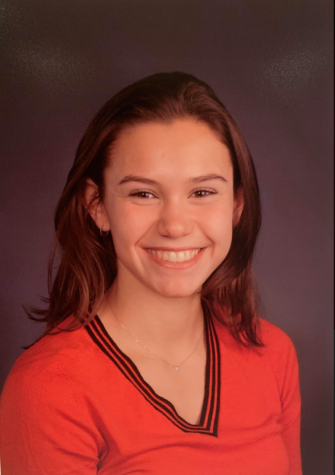
Marianne Mihas (’21) is one of The Forum’ s first two Sports Editors ever. She is the captain of the cross country and track team as...
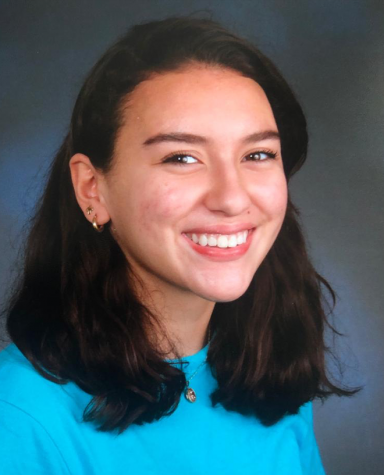
Angela Gil (’21) is a senior at Latin and is honored to be serving as The Forum’s Features Editor. She has written for The Forum...














































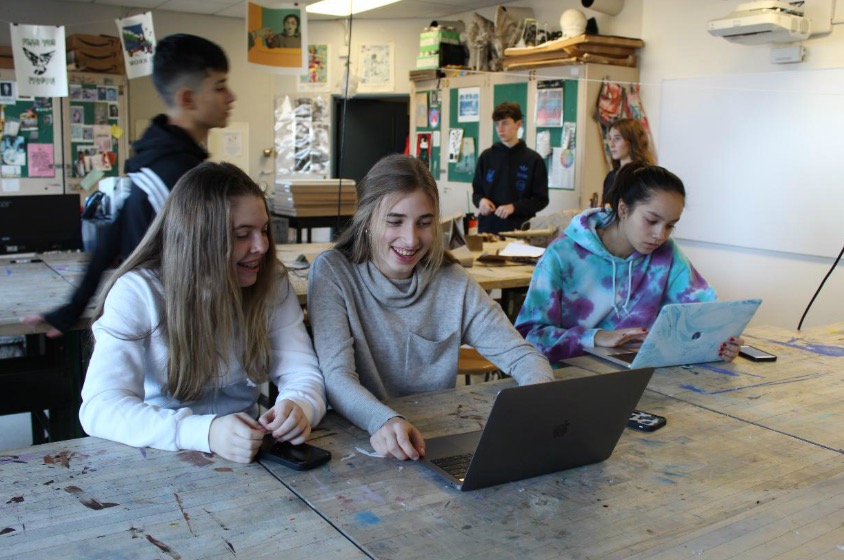
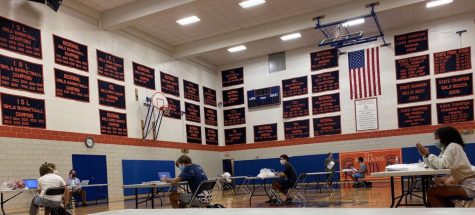
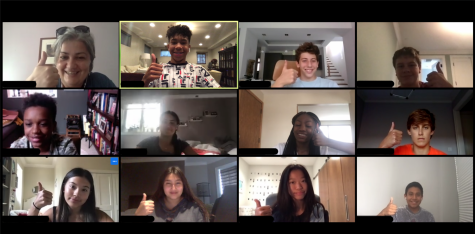
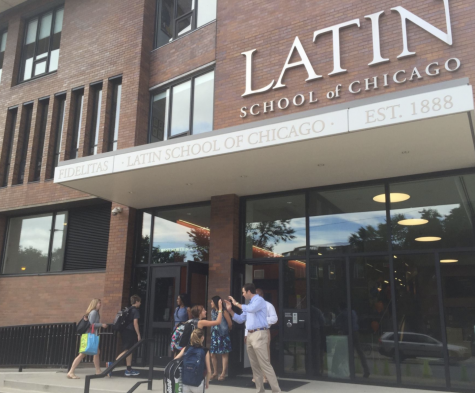
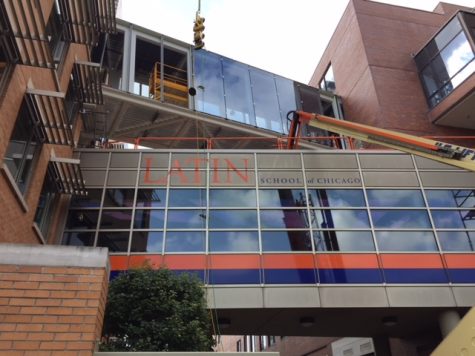
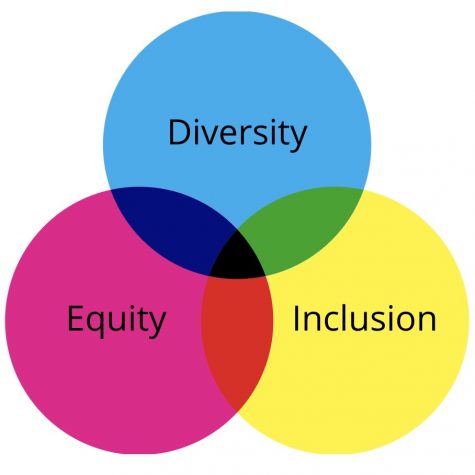
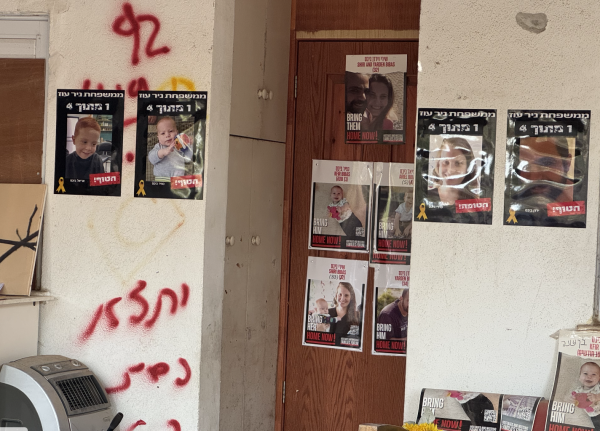




Madison Seda • Aug 21, 2020 at 5:11 pm
Well written from both sides! While I am sad that senior year will look different than I and many would’ve hoped, Angela’s point about inequity really stands out to me and something I always think back to when I question Latin’s decision to go remote. Everyone has many different factors that may limit them in their lives; more than if they are immune compromised or not. I feel as if ableism and other classist/economic ideologies limit peoples views about the pandemic and how it should be treated.
Robert Igbokwe • Aug 20, 2020 at 8:47 am
Thank you so much for writing these thoughtful pieces, Marianne and Angela. You’ve been demonstrated just how difficult this conversation can be. I personally tend to agree with Angela, but you make some very compelling points Marianne, and I totally share your desire to be able to return to campus as well. I think the school has chosen the plan that is safest and most effective for now. Hopefully, the situation will change by second semester.
Marianne Mihas • Aug 18, 2020 at 2:12 pm
Hi Bella! You bring up some great points. For one, I don’t think the school would decide to buy space, they would most likely rent it, a much faster and less pricey process (especially given that we don’t need the space permanently). As for the park, Latin hosts events in Lincoln park on a weekly bases in a year where there is no covid 19, and our lower and middle schoolers use it every day for outdoor gym and recess. And the point about Henry was more to suggest that we would actually be safer if we were back in school, as kids would be forced to social distance for 8+ hours a day and be given less time to interact with people in non-socially distanced ways. Anyways, thank you for reading the article!
Bella Campise • Aug 18, 2020 at 10:58 am
Marianne and Angela, thank you for sharing such interesting points! I wonder how although young people may be at a small risk for dying, as Marianne said, how they are complicit in the spread of the virus. For example, just because a student is perfectly healthy and recovers well does not mean they won’t spread it to an immunocompromised member of our community. That’s why it’s tricky to compare the teen deaths from the virus to something like car accident deaths. Also, while it’s great that students like Henry feel that they can go out and hang out with friends, I know many members of the community do not feel the same, and by reopening those members might feel pressured to do something they don’t feel comfortable with in an effort to avoid falling back academically. I am also wondering about the logistics of buying a new building, and while it would be great I just don’t know if it’s plausible. We would need to acquire the property in a matter of weeks to be ready in time for school, where negotiations usually take months. And because there’s no buildings for sale in the surrounding area that will cost a lot more than Latin will likely be able to raise especially since many families are being conservative with their money as a result of the volatility of the market due to covid 19. I also wonder how we would hold class in a park given that parks are public property— they don’t belong to Latin just because we are in close proximity. Again, great points and perspectives— I enjoyed reading this piece even if I didn’t agree with everything written in it.
Amankona • Aug 17, 2020 at 9:57 pm
Thanks for the thoughtful perspectives, Marianne and Angela!